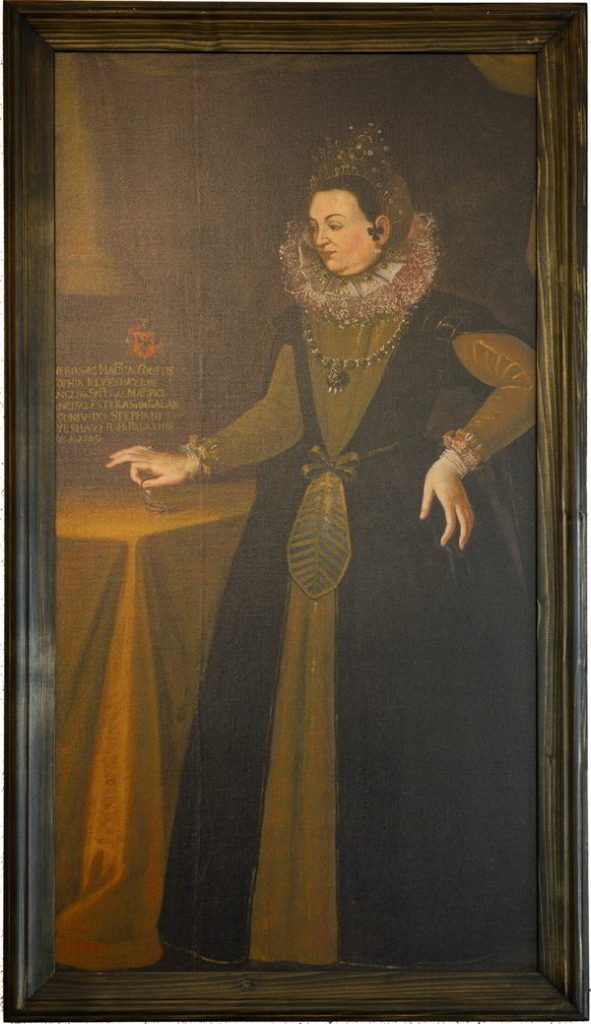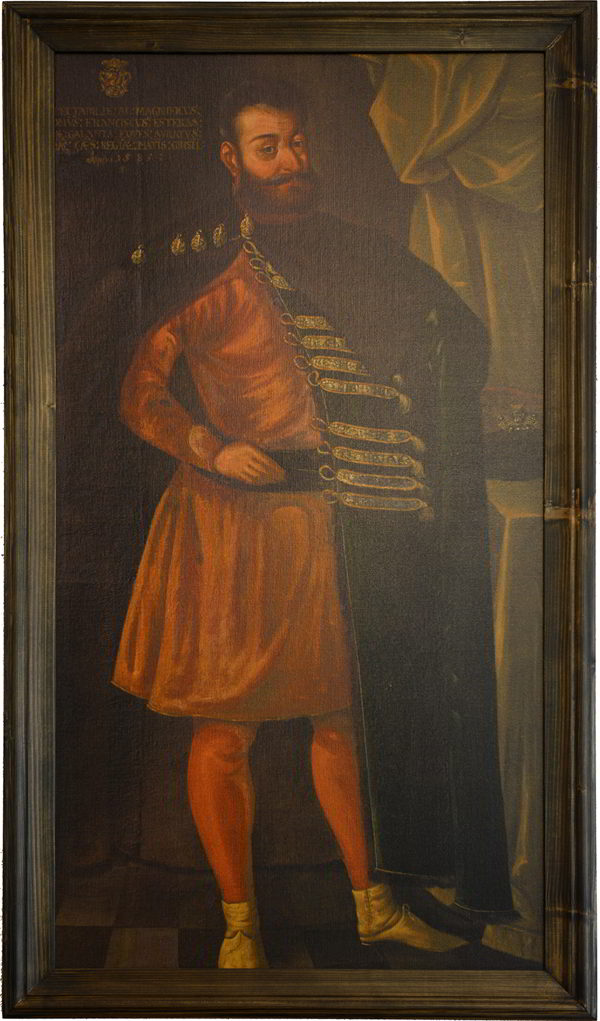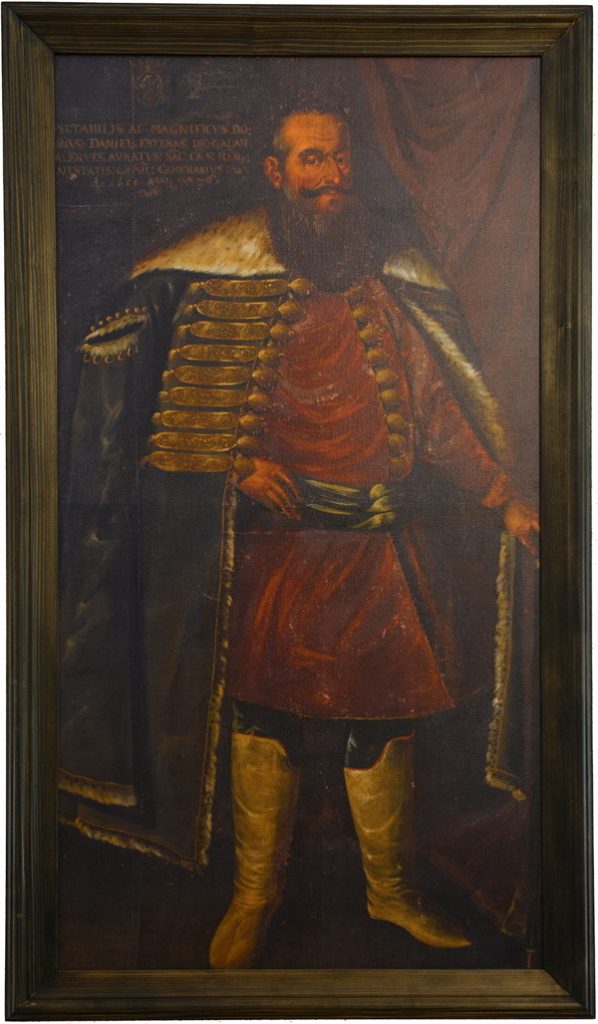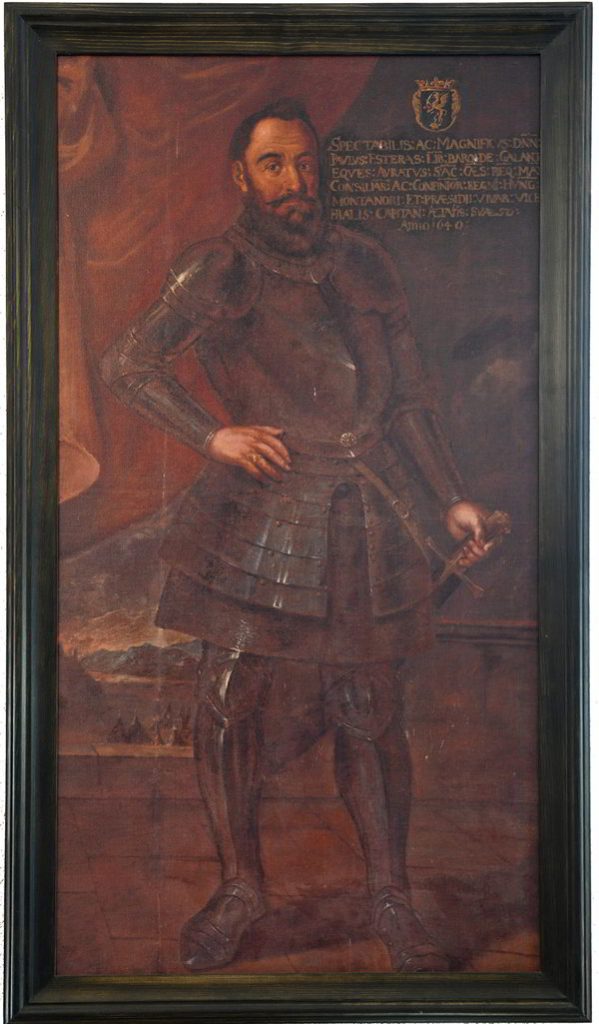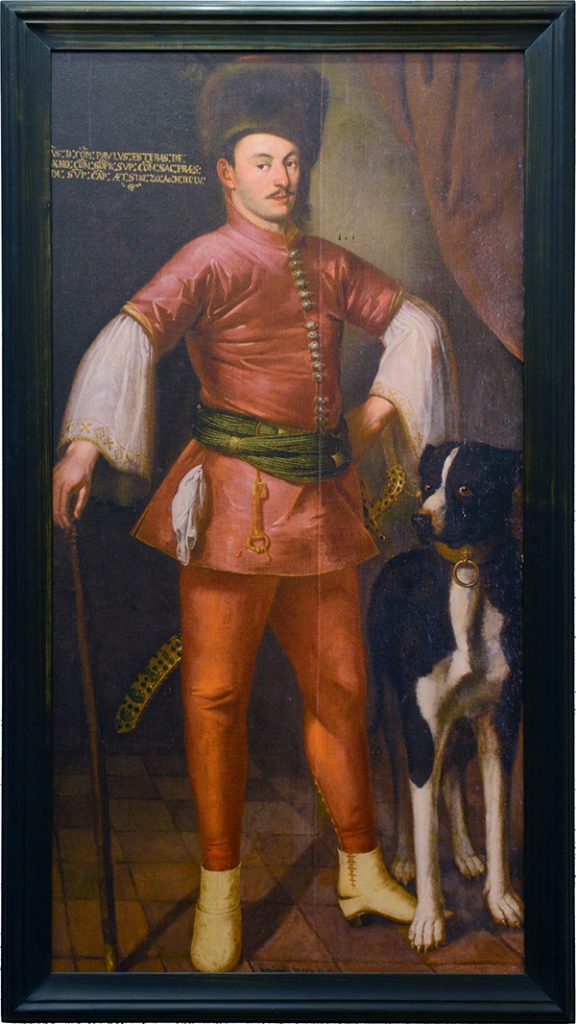Galanta ležiaca v srdci Matúšovej zeme na Južnom Slovensku bola statkom Esterházyovcov a rodina vo svojom aristokratickom prímení storočia uchováva svoje tunajšie korene a príponu De Galantha. V usadlosti sa nachádzajú až dva kaštiele Esterházyovcov: menší a skromnejší, pôvodom z konca 15. storočia, ktorý bol neskôr prestavaný v barokovom štýle, a druhý väčší, ktorý bol postavený v roku 1633. Kým prvotne spomínaný už ako obnovený slúži na kultúrne účely, ten druhý desaťročia stojí prázdny a jeho stav sa zhoršuje, iba teraz sa zobúdza z dlhého spánku Šípkovej Ruženky, vďaka miestnym nadšencom.
Ak by sme chceli vyznačiť historicko-umelecké a historicko-architektonické miesto Neogotického kaštieľa počas jeho rozkvetu v 19. storočí, tak musíme sa pozrieť viac ako jedno storočie dozadu. Musíme začať s konštatovaním, že v architektúre Maďarska harmonicky pokojný, šľachetne jednoduchý klasicizmus v 40-ich rokoch 19. storočia vystriedala dynamická a rušná romantika s nepravidelnými formami. Za osobitný smer považujeme tudorský štýl ako vplyv anglického kaštieľa vo Windsoru (1824–40) (kaštiele v mestách Nagyugróc, Nádasdladány, Rusovce atď.) Popredné miesto patrí kaštieľu Esterházyovcov v Galante, ktorý dal postaviť gróf József Esterházy (1799–1879) v 60-ich rokoch 19. storočia, niekdajšiu rezidenciu staršej grófskej česneckej vetvy rodiny.
Kaštieľ sa nestaval ako „investícia na zelenom poli“, ale na jeho mieste stál hrad z neskoršieho stredoveku, asi so štvorcovým pôdorysom, ohraničený hradbou, posilnený na rohoch baštami, obklopený vodnou priekopou. Hradbu z tureckých čias dal postaviť Dániel Esterházy (1585–1654) a Pál Esterházy (1587–1645) ako prvok systému pomedznej tvŕdze na Južnom Slovensku, a ako o tom svedčí rovnoveká kamenná tabuľa s latinským textom, zamurovaná do západnej veže súčasného kaštieľa, kompletne bol postavený v roku 1633: „DALI SME POSTAVIŤ NAJLEPŠIEMU A NAJVÄČŠIEMU BOHU, DANIEL A PAVOL ESTERHÁZY SAMI SEBE A NAŠIM VĎAČNÝM POTOMKOM V ROKU 1633.“ Po tom, čo sultánové vojská v roku 1663 obsadili blízke Nové Zámky, pravidelné spustošenia neminuli ani Galantu, preto hrad ešte viac posilnili a vybavili. Po vytlačení Turkov v 18. storočí hrad – ako aj mnoho iných – bol prestavaný na kaštieľ, a to vďaka biskupovi Imre Esterházy (1689–1763). Baroková rezidencia zapadala do reťazca kaštieľov postavených maďarskými aristokratmi, ktoré sa nachádzali na severo-východ od vtedajšieho politického centra krajiny, Prešporku (Bernolákovo, Ivánka pri Bratislave, Veľký Bieľ, Kráľová nad Váhom, Galanta a o niečo na juh Tomášikovo).
Po viac ako sto rokoch spomínaný József Esterházy rozhodol o kompletnej prestavbe. Gróf bol veľmi naklonený myšlienke, aby tradičným centrom roztrhnutej famílie vyjadrujúci spolupatričnosť bola znovu Galanta, a aby bola postavená aj k tomu primeraná rezidencia. Prípravou projektov poveril jedného z významných architektov doby, Antala Wébera (1823–1889), ktorý mal dobré odborné priateľstvo s Miklósom Yblom. Peštiansky architekt odchovaný na majstrovskej škole Józsefa Hilda a následne na viedenskej akadémii v 50-ich rokoch 19. storočia často pracoval pre aristokratické rodiny. (Neskôr sa stal zamestnávaným architektom investícií hlavného mesta, kde projektoval najmä renesančné budovy.) S jeho menom súvisí projekt jedného z najvýznamnejších objektov výstavby romantických kaštieľov vo vtedajšom Maďarsku, postaveného v rokoch 1862–64, a to kaštieľ Erdődyovcov v meste Rotenturm an der Pinka v Rakúsku, takisto on vysníval kaštieľ Zichyovcov v meste Nagyhörcsökpuszta (1852–58), ktorý je už celkom zničený. Na základe času výstavby dvoch iných kaštieľov je pravdepodobné, že Wéber v rokoch 1858–62 sa zaoberal s galantským projektovaním pre Józsefa Esterházyho. Neogotický štýl okrášlil čulými, asymetricky umiestnenými vežami a strieľňami na rímsach. Strednú časť južnej hlavnej fasády rozdeľujú tri rizality vyzdvihnuté lomenými štítmi, na rohu veže so silnou hmotnosťou. Na základe línie fasády je určité, že tvar hlavného krídla ovplyvnili danosti predchádzajúcej budovy. Mimoriadne bohaté a pestré sú architektonické detaily, ozdobné prvky, okná, lomené štíty a rímsy tak veľmi, že svojim charakterom a motívmi už vystupujú z kategórie gotiky a pripomínajú architektúru synagógy. Dve prízemné krídla majú oveľa jednoduchší tvar, ich okná sú oblúkové, znakmi romantiky sa stretávame iba na rímsach a lomených štítoch s kaskádovitým riešením.
V hlavnej budove v schodisku pod vjazdom pre koče okrem gotického-rebrovaného pokrytia ostalo gotické schodové zábradlie s bohatým vzorkovaním, a v niekoľkých miestnostiach neogotická alebo renesančne klenba. Niekde ešte nachádzame niekdajšie podlahy a dlažby, detaily rámov dverí, a zdá sa, že nám neskôr môžu poskytnúť dobré oporné body pri náročnej obnove pamiatky pre nevyhnutnú rekonštrukciu niektorých detailov. Nad rámec toho o interiéroch a zariadeniach panských apartmánov starých čias nevieme skoro nič. Tu musíme uviesť kuriózny záhradný prvok, ktorý sa zachoval skoro zázračným spôsobom – jednu z dvoch studní nádvoria. Pamätihodnosť vyššia ako človek, vyhotovená z liatiny pripomínajúca baštu pravdepodobne nemá páru a je jedinou zachovanou neogotickou studňou na Slovensku. Ďalším unikátom nádvoria je obnovená neogotická brána, ktorá bola vyrobená práve v 19.storočí.
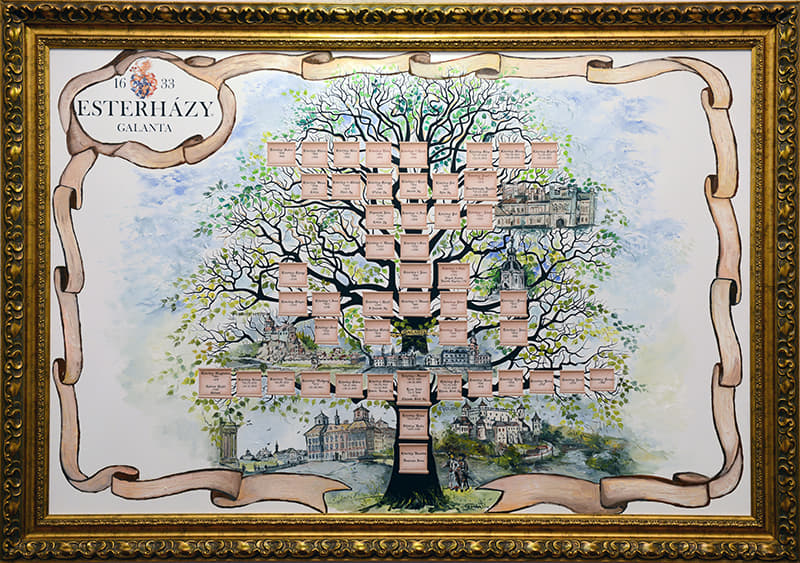

Kaštieľ bol dokončený v polovici 60-ich rokov 19. storočia, pekné plány Józsefa Esterházyho preškrtol macošský osud: jeho dcéry, Mária (1827–1833) a Gizella (1837–1852) ešte ako deti sa stali obeťou nákazlivého ochorenia, a syn Géza (1834–1870) odišiel spomedzi živých ešte mladý, 36 ročný, bez potomka. Gróf József zomrel 1. januára 1879, a jeho manželka Róza Barthodeiszky (1795–1879) v tom istom roku, dňa 4. decembra. (Ich pozostatky odpočívajú v cintorínskej kaplnke, ktorú dal postaviť takisto József.) Smrťou grófa kaštieľ Esterházyovcov prešiel na šárošskú vetvu a stratil svoju rezideálnu rolu a trvalo ho nikto neobýval. Po prvej svetovej vojne vtedajší vlastník, László Pál Esterházy (1857–1942) predal kaštieľ Československému štátu a tým sa vlastne pretrhol posledný vlások, ktorý spojoval Esterházyovcov ku Galante.
Po roku 1920 v budove sídlili rôzne úrady, a na také účely bola využívaná až do 70-ich rokov 20. storočia. Následne do roku 1990 budovu spravovalo okresné múzeum, potom bola zväčša vyprázdnená a dlhú dobu bola vystavená rozmarom prírody a ľudskému vandalizmu. V roku 1993 mesto získalo objekt od štátu. V oživení tradícií Esterházyovcov za míľnik bol považovaná rok 1995 a veľká výstava histórie rodiny vo Vlastivednom múzeu a v Renesančnom kaštieli.
V roku 2012 vzniklo Občianske združenie Neogotický kaštieľ v Galante, nezisková organizácia, ktorá začala intenzívne pracovať na obnove dlhodobo nevyužitej pamiatky.
V závere môžeme povedať, že význam novšieho galantského kaštieľa Esterházyovcov je naozaj značný aj z hľadiska dejín umenia, aj z hľadiska histórie. Životné dielo Antala Wébera, ktorý mal blízko aj k architektúre Frigyesa Feszla, vytvára trvalú trojku objektov spolu s kaštieľmi v meste Vörösvár a Nagyhörcsökpuszta, a vychádzajúc z jej umeleckej kvality je jedným z najlepších z reprezentantov našej romantickej, novogotickej architektúry 19. storočia. Určujúcim aspektom jeho historickej hodnoty zároveň je dedičstvo Esterházyovcov, štyristoročná minulosť rodiny pochádzajúcej z Galanty.
Tieto hodnoty a tradície rysujú markantné línie budúcnosti kaštieľa: zachovávanie hodnoty generujúce aj silný cestovný ruch a starostlivosť o historické tradície v rámci pestrého kultúrneho života. Jednoznačne vnímam dôležitú potrebu spolupráce s turisticky smerodajnými hradmi a kaštieľmi regiónu, ale aj s miestami stále žijúcej kultúry Esterházyovcov na území Rakúska a Maďarska, mestami Eisenstadt, Forchtenstein a Fertőd.
Varga Kálmán
historik

